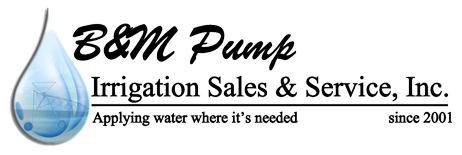Tips for Winterizing a Cotton Irrigation System
Wondering how you can winterize the drip irrigation system you use to water your cotton crop? Winter cotton irrigation system preparation is an important offseason task. Keep your investment in an irrigation system secure during the cold-weather months of the year with the following tips.
Flush the system with water
Drip tube-based systems need a flush with water before cold weather arrives. This ensures that small debris that could potentially clog emitters during winter drainage are completely out of the system. Follow these steps for a proper flush:
- Open the flush plugs on drip lines.
- Increase the pressure on the system just slightly above standard operating pressure.
- Flush with clean water that’s completely free of debris.
- Continue the flush until the end point farthest away from the pump has water flowing.
- Finish by closing the end plugs and turning the pump off.
Flush the system with chlorine
After the water flush, perform a chlorination flush if you have a system with drip tubing and emitters. The chlorine will take care of any algae that’s built-up during the warm seasons. Following the chlorination flush, run one last clean water flush to remove the chlorine from the lines.
Open drain plugs at low points
Following your flushes, opening the drain plugs is the next step in winter cotton irrigation system preparation. This should drain the water from the system to keep it from freezing should the temperatures get too cold.
Back flush media filters
Remove sediment from the system with a back flush of media filters. When you back flush the system properly, a clean stream of water should be produced. You should then open all drain ports to let the water drain from the filters.
Drain the screen filters
Draining the screen filters will completely remove all water and reduce the potential for freezing during the winter. During the drain, check the screen’s condition and remove any sediment.
Deal with the control valves
Control valves should be drained or removed, if possible, and stored in a place where they won’t get frozen. If you do remove the valve, cover any openings to keep rodents from entering and blocking water flow at the start of next season.
Take out the drain plug and drain water from all above-ground pumps
Always drain above-ground pumps prior to storage since they can hold water in the casing. This should prevent freezing and keep the case from cracking.
Remove any other system components that can hold water
If you have any other components in your system that may be holding water, remove them if possible. Any openings made due to removal should be kept covered throughout the winter.
Secure electrical components and service pumping engines
Lock all electrical boxes to prevent the system from engaging during the winter. You should also service all engines that move water prior to winter storage. It’s a good idea to give your local irrigation professionals a call to schedule service well before cold weather arrives.
Winter cotton irrigation system preparation must be done before the first deep freeze of the year. For more tips and expert information on winterizing your system, reach out to B&M Pump Irrigation Sales & Service, Inc. today.
Categorised in: Uncategorized
